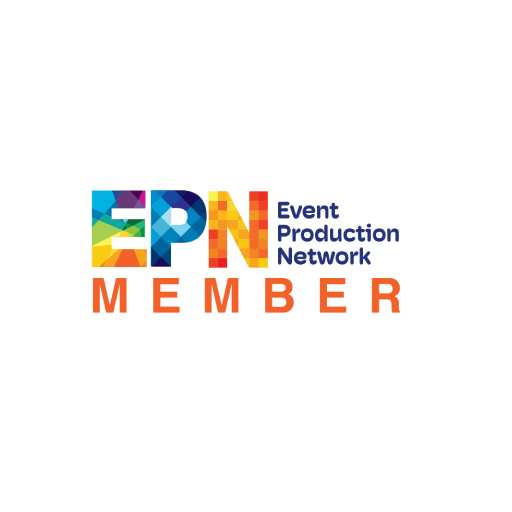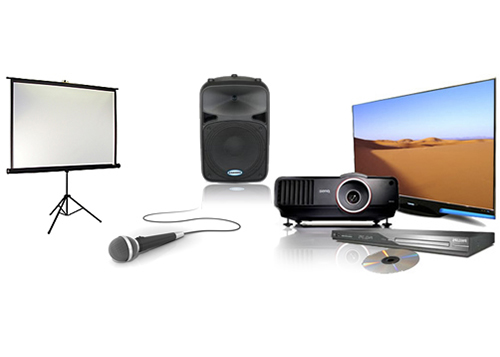Expert tips for choosing audio visual charlotte nc specialists
Recognizing the Inclusion of Audio Visual Modern technology in Today's Educational Environments
The assimilation of audio-visual innovation in educational setups has actually transformed the teaching and learning process. Educators now have access to tools that cater to various learning styles, boosting student interaction and partnership. However, the consolidation of these modern technologies presents both possibilities and difficulties. Recognizing just how to properly execute these tools is essential. What methods can educators employ to take full advantage of the benefits of audio-visual technology in their class?
The Evolution of Audio-Visual Modern Technology in Education
As instructional needs evolved over the decades, audio-visual innovation undertook significant changes that reshaped the discovering setting. Initially, tools such as film projectors and slide programs were the key ways of incorporating aesthetic elements right into classrooms. These early technologies provided educators with the ability to present information dynamically, yet they were limited in access and interactivity.
With the introduction of video cassette recorders in the 1970s, classrooms began to integrate recorded lessons, expanding the extent of academic resources. The introduction of computers in the 1980s additional changed this landscape, enabling the development of multimedia discussions and interactive learning experiences.
The surge of the web in the 1990s marked a critical moment, allowing real-time accessibility to a riches of audio-visual products. Today, electronic tools such as interactive whiteboards and online knowing systems remain to boost the academic experience, fostering interaction and cooperation amongst learners.
Advantages of Audio-Visual Tools for Diverse Knowing Styles
Audio-visual devices play a vital duty in accommodating diverse knowing designs by boosting aesthetic learning and boosting auditory engagement. By including images, videos, and noise, these technologies develop a more comprehensive educational environment. This multifaceted method permits teachers to deal with the different preferences and demands of trainees effectively.
Enhancing Visual Understanding
Interaction in the knowing process is noticeably boosted with making use of audio-visual devices, accommodating various learning designs. These tools, such as videos, infographics, and interactive presentations, offer visual stimuli that aid understanding and retention. Aesthetic students, specifically, take advantage of the incorporation of images and computer animations, which can streamline complex principles and boost understanding. In addition, audio-visual resources can show real-world applications, making discovering more relevant and appealing. By incorporating color, movement, and audio, teachers can create a vibrant knowing setting that captures pupils' attention and cultivates deeper cognitive links. Ultimately, the tactical use of audio-visual modern technology not just supports visual knowing but also enhances the general educational experience for diverse learners.
Improving Auditory Interaction
A considerable advantage of including audio-visual tools in education is their ability to enhance auditory engagement among students. These tools, which encompass multimedia discussions, podcasts, and interactive audio aspects, provide to numerous learning designs, particularly profiting acoustic learners (audio visual charlotte nc). By integrating sound and narrative, educators can develop immersive experiences that record pupils' interest and reinforce comprehension. This engagement is vital, as it cultivates a deeper understanding of the product and advertises retention. Additionally, audio-visual tools can help with joint knowing settings, urging pupils to take part in conversations and share their understandings. Eventually, the consolidation of audio-visual innovation not only supports acoustic interaction however also enriches the total instructional experience, making learning more dynamic and effective for all pupils
Enhancing Interaction With Interactive Knowing

Gamification elements, such as quizzes and simulations, can improve inspiration and retention, making finding out a lot more pleasurable and efficient. These methods not only stimulate cognitive engagement but also accommodate diverse knowing styles, making certain that all trainees can get involved meaningfully. Therefore, interactive knowing settings promote a sense of area and belonging, eventually causing improved academic outcomes. Through the combination of audio aesthetic innovation, teachers can transform traditional class right into vivid rooms where students flourish and actively form their instructional trips.
Linking Concept and Experiment Multimedia Resources
Multimedia sources work as an essential web link between academic concepts and functional application in educational settings. By improving engagement, facilitating joint learning experiences, and supporting diverse learning styles, these tools create a more comprehensive and vibrant understanding setting - audio visual charlotte nc. This strategy not just promotes much deeper understanding yet also prepares students for real-world challenges

Enhancing Interaction With Multimedia
Interaction in academic setups substantially boosts when trainers include multimedia sources right into their mentor methods. The usage of video clips, podcasts, and interactive presentations enhances the learning experience, permitting trainees to attach with the product on several levels. Multimedia resources satisfy various learning styles, giving visual, auditory, and kinesthetic stimulations that can hold students' interest much more efficiently than conventional lecture techniques. In addition, these sources can streamline intricate principles, making them extra accessible and memorable. By incorporating multimedia, teachers can produce a dynamic classroom setting that cultivates inquisitiveness and inspires learners. Ultimately, the critical use audio-visual technology offers to bridge the gap in between theoretical understanding and sensible application, enriching the academic experience for both instructors and pupils.
Facilitating Collaborative Understanding Knowledge
Various studies show that collective learning experiences considerably improve trainee results when integrated with multimedia sources. Multimedia tools promote interaction amongst trainees, enabling them to participate in analytical and vital thinking jointly. By utilizing video conferencing, joint platforms, and interactive discussions, educators develop environments for team effort and shared discovering. These technologies make it possible for students to connect their ideas properly and receive immediate responses, promoting a much deeper understanding of the topic. Additionally, multimedia sources can offer complicated ideas in even more absorbable layouts, advertising conversation and cooperation. Because of this, the combination of collective learning and audio-visual technology not just improves the educational experience however likewise prepares pupils for real-world team effort dynamics, highlighting the significance of teamwork and collective understanding construction.
Supporting Diverse Learning Styles
While conventional teaching methods frequently cater to a minimal series of discovering preferences, the integration of audio-visual modern technology supplies a much more inclusive approach to education and learning. By using multimedia resources such as videos, interactive simulations, and electronic presentations, educators can address numerous discovering styles, consisting of visual, acoustic, and kinesthetic. This versatility permits distinguished instruction, making it possible for trainees to engage with content in manner ins which reverberate with their private preferences. Furthermore, audio-visual tools can facilitate deeper understanding by giving several representations of complicated ideas. As an outcome, trainees who might struggle with standard techniques can find different paths to success, fostering an website extra equitable discovering atmosphere that sustains scholastic achievement for all students.
Challenges in Implementing Audio-Visual Innovation
Audio-visual modern technology holds fantastic assurance for enhancing instructional experiences, its implementation usually comes across considerable difficulties. One primary concern is the financial worry connected with investing in and preserving such equipment, which can strain budgets, particularly in underfunded establishments. Furthermore, inadequate training for instructors can hinder efficient assimilation, leaving them ill-prepared to use the technology completely. Technical issues, such as software program malfunctions and compatibility issues, might also interfere with lessons and annoy both teachers and pupils. Additionally, differing degrees of student access to modern technology outside the class can create variations in learning opportunities. The capacity for over-reliance on technology might take away from vital teaching methods, inevitably restricting the academic experience. Dealing with these challenges calls for a detailed technique, including adequate financing, specialist advancement, and fair access to sources, to guarantee that audio-visual technology can be leveraged efficiently in today's educational setups.
Finest Practices for Integrating Modern Technology in the Class

In addition, fostering an interactive environment with collective devices urges student engagement and participation. Using varied audio-visual resources accommodates different discovering designs, suiting aesthetic, auditory, and kinesthetic learners. Regularly assessing the effect of modern technology on pupil knowing assists instructors refine their methods and adjust to transforming demands. Involving trainees in the choice of innovation advertises ownership and motivation. By adhering to these ideal methods, teachers can create a vibrant class environment that successfully integrates technology and boosts the instructional experience for all pupils.
The Future of Audio-Visual Innovation in Education
As classrooms increasingly welcome innovation, the landscape of audio-visual tools in education remains to develop (audio visual charlotte nc). Future developments are expected to concentrate on higher interactivity and personalization, allowing educators to customize finding out experiences to specific student requirements. Advancements such as augmented truth (AR) and digital fact (VIRTUAL REALITY) will likely provide immersive knowing settings, boosting student interaction and understanding
Synthetic intelligence (AI) is positioned to play a significant duty in audio-visual modern technology by using real-time feedback and flexible understanding pathways. This combination may assist instructors identify and resolve trainee difficulties better. Cloud-based platforms will certainly promote less complicated access to resources and cooperation among pupils and teachers, despite location.
Along with these technical advancements, expert development for teachers will be crucial, guaranteeing they are geared up to utilize these devices efficiently. Overall, the future of audio-visual modern technology in education promises to develop more dynamic, comprehensive, and impactful discovering experiences.
Frequently Asked Inquiries
How Can Educators Choose the Right Audio-Visual Equipment for Their Class?
Picking suitable audio-visual devices calls for instructors to analyze their educational objectives, take into consideration student requirements, review available innovation, and look for referrals from peers or experts, ensuring devices properly enhance knowing and interaction within their details class environment.
What Budget Considerations Are There for Executing Audio-Visual Innovation?
Budget plan factors to consider for carrying out audio-visual innovation include preliminary acquisition prices, upkeep expenditures, training for team, and possible software program licensing fees. Additionally, long-lasting investment in updates and substitutes must likewise be factored into economic planning.
Exist Particular Training Resources for Educators on Audio-Visual Equipment?
Numerous establishments offer training resources for instructors on audio-visual tools, including online training courses, workshops, and instructional overviews. These sources aim to boost teachers' abilities and confidence in effectively incorporating technology right into their teaching methods.
How Do We Determine the Effectiveness of Audio-Visual Modern Technology in Knowing?
Gauging the effectiveness of audio-visual modern technology in learning includes evaluating trainee involvement, comprehension, retention prices, and overall academic efficiency. Surveys, evaluations, and empirical studies can give valuable understandings right into its influence on academic outcomes.
What Are Typical Misunderstandings Concerning Audio-Visual Technology in Education?
Typical misconceptions regarding audio-visual modern technology in education and learning include the belief that it assures engagement and learning results, along with the assumption that all trainees profit equally, neglecting private understanding preferences and needs.